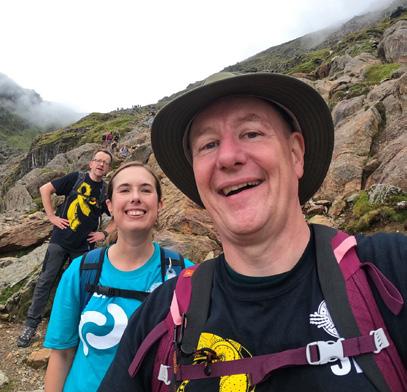contact
SUPPORTING FAMILIES THROUGH

SUPPORTING FAMILIES THROUGH
What are they? How do they work? Find out more about how clinical studies underpin all treatments for children with cancer
HOW PATIENTS AND FAMILIES ARE HELPING PRIORITISE RESEARCH
ANIMATIONS TO SUPPORT PARENTS IN MAKING DECISIONS
Learn more about the impact of CCLG’s research

Pages 11-14
BACK TO BASICS:
The why and what of UK clinical trials
Professor Pam Kearns tells us why clinical trials happen and what is involved Page 8
Katy Jones, mum to Eden, explains some of the things her family considered before deciding to enter a clinical trial Page 5
06 Helen Pearson and Katie Johnson, co-chairs of the National Neuroblastoma Nursing Group, explain how they've developed animations to aid decision making for a clinical trial
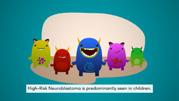
10 Professor Bruce Morland tells us about his work as the chief investigator on PHITT, an international clinical trial
17 Supporting PARP inhibitor clinical trials to find the best treatment for every child
A research project funded by The Little Princess Trust in partnership with CCLG
04 Medical Adviser
Dr Martin English introduces the theme of ‘Clinical studies'
04 News in brief
A round-up of the latest updates in childhood cancer
08 Back to basics
Professor Pam Kearns tells us why clinical trials happen and what is involved
15 A parent’s view
Carrie Wright, whose daughter Lucy was diagnosed with neuroblastoma in 2018, writes on taking part in a clinical trial and offers advice to others
18 60 seconds with...
Dr Guy Makin, National Lead, Experimental Cancer Medicine Centre (ECMC) Paediactric Network, tells us about his career
19 Ask the Expert
Three research nurses answer your questions about their role in clinical trials
05 Patient story
Katy Jones, mum to Eden, explains some of the things her family considered before deciding on entering her daughter into a leukaemia clinical trial
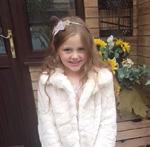
16 We hear how patients and families are helping prioritise research as part of the Children's Cancer Priority Setting Partnership (PSP)
is a free, quarterly magazine for families of children and young people with cancer.
Contact aims to reduce the sense of isolation many families feel following a diagnosis of childhood cancer. Children’s Cancer and Leukaemia Group brings together childhood cancer professionals to ensure all children receive the best possible treatment and care. Contact magazine was founded by The Lisa Thaxter Trust and CCLG and first published in 1999.
The contents of Contact are the copyright of the publishers. Articles may be reprinted without charge provided that credit is given to Contact magazine. A copy of any reprinted article should be sent to the editor at the address above. Please let us know your thoughts and feedback about Contact by emailing our Editor at editor@cclg.org.uk
Editorial Board:
Managing Editor – Ashley Ball-Gamble
Editor – Claire Shinfield
Assistant Editor - Sam Chambers
Medical Adviser – Dr Martin English
Medical Adviser – Dr Bob Phillips
Ceri Hogg – Nurse, Cardiff
Mike Francis – Parent and Survivor, York
Katherine Ince – Survivor, London
Dr Vikki Langford - Psychologist, Birmingham
Dr Rebecca Mulholland - Psychologist, Sheffield
Rachael Olley – Parent, CCPA
Gayle Routledge – Parent, Stafford
Samantha Schoolar – Survivor, Coventry
Gill Thaxter – Parent, Coulsdon
Nicky Webb – Nurse, East Midlands
Sally Morrison - Nurse, Leeds
Past issues of Contact: The wide variety of articles published during the year in Contact adds up to a valuable and informative reference archive. If you would like any back issues, please contact the Editor. Details of key articles in previous editions are listed on our website.
www.cclg.org.uk
ChildrensCLG
Contact Letters, CCLG, Century House, 24 De Montfort Street, Leicester LE1 7GB
Editor: Claire Shinfield editor@cclg.org.uk
facebook.com/ChildrensCLG
twitter.com/CCLG_UK
instagram.com/CCLG_UK
From Contact's last edition:
“Wow! I wished I had known about these when my then two-and-ahalf-year-old was going through chemo. It would have been such a weight off my mind, the constant anxiety of them pulling it out terrified me.”

Read the full article on our website
“A great read from @CCLG highlighting their research funding across the UK.”
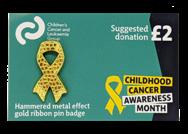

“Received a paper copy of the @CCLG Research Impact Report. Absolutely fabulous! Well done to the CCLG Team for producing such an informative report which shows clearly the impact research can have on #ChildhoodCancer.”
*Find out more about our Research Impact Report on pages 10-13
“CCLG offer a sound source of evidence-based info, that is accessible for families. One of my goto websites.”
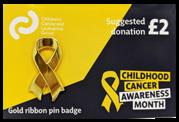
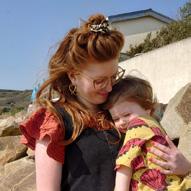


If you would like to SHARE YOUR STORY in Contact or have an idea for a theme for us to cover, please let us know. Email us at editor@cclg.org.uk
If I'd had cancer as a child, I probably wouldn't be alive today. Now, more than eight out of 10 children are treated successfully.

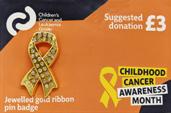

Doctors and scientists are always looking to improve treatments, and one way of doing this is through clinical studies. Taking part in a clinical trial is a key part of treatment for many children with cancer. In this issue, we have lots of helpful information on what clinical studies are, how they work and who is involved. We also hear from families who share their experiences of taking part in clinical studies. Our four-page supplement showcases our research impact into finding a cure for children's cancer. And finally, September is Childhood Cancer Awareness Month. Wear your gold ribbon and help us spread awareness!
editor@cclg.org.uk
CCLG’s information resources supporting more families through cancer
“Caitlin is incredible. I’ve had the absolute pleasure of speaking with her about Choob Toob and it’s totally fantastic!”
Almost all our understanding of different treatments has been gathered from clinical trials: What’s best and how do we know that it is? How can we use enough to make a child’s cancer go away and stay away, but avoid side effects from giving more than is needed?
The first modern medical trial is attributed to the naval surgeon Dr James Lind. On HMS Salisbury in 1747, he tested different dietary supplements as a cure for vitamin C deficiency or scurvy, which was a serious threat to life with the dietary restrictions in long sea voyages. He compared different treatments in patients with similar illnesses in the same circumstances. They didn’t know it was vitamin C that provided the cure, but it gave evidence of the benefit of the juice of citrus fruits.
I can remember early trial protocols as slim, typewritten documents that were often less than 50 pages. However, current protocols are asking more complex questions - often across continents, never mind countries. Two patients of mine have completed treatment for brain tumours and were in the same clinical trial. The trial protocol was a 246-page closelyprinted document and I had to spend some time making sure I was doing all the relevant investigations.
The time taken to produce and implement trials has also increased with their complexity. Patients and families want the best treatment with the least side effects. Clinical trial designers want answers to as many important treatment questions as possible whilst keeping the trial’s design, implementation and analysis as simple as possible.
Dr Lind and his contemporaries wouldn’t recognise what we regard as a trial today, but the basic principles they started to lay down - of comparing different treatments in similar groups - stand the test of time.
A new blood test could help to safely cut hospital stays for children with cancer who develop a fever, a new study has shown.
The study reveals the blood test can help doctors to distinguish between children whose fever is a sign of serious illness and those who are safe to go home, helping to possibly cut average hospital stays down to two days, with some able to leave in as little as eight hours.
(Source: University of York)
US researchers have developed a faster way to process whole genome sequencing (WGS) data. WGS is where a patient’s DNA is looked at to help find out what type of cancer a patient has and what treatments could work.
The researchers hope that faster analysis of WGS could identify the best personalised treatments for each patient quicker.

(Source: Nature.com)
A study has compared four of the most common chemotherapy regimes to see which is most effective at treating relapsed or refractory Ewing’s sarcoma.
This is the first clinical trial comparing treatment options between patient groups, so is the first to indicate the best treatment option.
The study found that ifosfamide was the most successful for children, taking into account side effects and quality of life.
(Source: University of Manchester)
US researchers have found a gene that, when combined with the chemotherapy drug doxorubicin, can cause heart problems later in life for childhood cancer survivors.
If a patient carries one copy of the gene, they may be up to three times more likely to have heart problems after their treatment, whilst if they have two copies it can be up to nine times more likely.
Researchers hope this will help identify those survivors at risk and reduce side effects for patients in future.
(Source: stjude.org)
Katy Jones' daughter Eden was three years old when she was diagnosed with leukaemia in July 2017. She explains some of the things her family considered before deciding on entering into a clinical trial.



Before Eden’s diagnosis, life was busy for us! She was a very active and independent toddler, involved with cheerleading, forest school, play school and adventures. This all started to change when she began experiencing various joint pains for a few months, which were incredibly painful and stopped her doing the activities she loved. She also became lethargic, particularly during the day, but the doctors kept telling me she had ‘pulled elbow’ or other explanations. However, when on holiday in France, I noticed her skin had a yellow tone and began to suspect it was more serious. She then developed a lump on her neck and got a severe case of chicken pox. On the return home, she was being sick.
I took her back to the doctor, who asked me many questions that I knew were related to cancer. We were referred to hospital, where the tests showed severe anaemia, coming as somewhat of a relief as it was the lesser evil. We started on iron supplements, but after two or three weeks, Eden’s iron level was actually going down. They told me this wasn’t really possible and brought us back for more tests.
Later, they took us into a room and confirmed our worst fears - Eden had cancer, acute lymphoblastic leukaemia (ALL). Everything that followed was a whirlwind. We spent a couple of days with Eden, who was trying so hard to be brave, having various blood tests and cannulas, before moving onto the paediatric oncology ward at the Leicester Royal Infirmary, where the team was amazing!
for a while and we felt the research had so far shown good results. We decided that we were in a fortunate enough position that we could accommodate the trial with the required hospital stays (one week in, three weeks out). We also considered that it was a standard practice in countries like Germany.
The consultant explained the trial clearly so we had the best chance of understanding and we were given literature to read through as well. We were also spoken to regularly by the trial nurse and kept up to date with all the information. We didn't get very long to decide, but we didn't feel pressured in any way and felt informed enough to make a decision. We felt it was in Eden’s best interest to give her the most up-todate treatment plan that was available to her to give her the best chance.
The consultant strongly recommended a trial that was available, which we opted into, saying that Eden would cope well with it. It gave her more intense chemotherapy, but allowed us to have fewer lumbar punctures in the long run, reducing the amount of hospital visits and procedures. The lack of IV meds required also meant she could have her Hickman line removed earlier and have regular blood tests/finger prick blood tests. We also hoped the trial would remove the need for any more steroids, which had previously made Eden angry, hungry and uncomfortable.
Before we decided to opt in, we considered the long-term factors, such as how the treatment may impact her life, hospital visits and general anaesthetics, and felt it was the best option for her. It had also been going
After two years and three months of treatment, hospital stays, drips, lumbar punctures and more, Eden’s now doing amazingly and is absolutely thriving. She’s very clever and does more activities than ever, including cheer, swimming, Brownies and after-school clubs!
Before we decided to opt in, we considered the long-term factors, such as how the treatment may impact her life, hospital visits and general anaesthetics, and felt it was the best option for her.
When a child is diagnosed with neuroblastoma, cells from the child’s tumour are assessed and categorised by doctors using a neuroblastoma staging system so that they can see if the cancer cells are low-, intermediate- or high-risk. By doing this, doctors can decide on the right treatment for the child depending on the stage of the tumour.
Around 50% of children diagnosed with neuroblastoma are classified as having high-risk disease. This means that these children will usually need intensive treatment from the start because their neuroblastoma cells are highly cancerous and will therefore behave more aggressively in the body. Most children will need a combination of different types of treatment such as surgery, chemotherapy (include highdose chemotherapy), radiotherapy and immunotherapy.

A new clinical trial called HRNBL-2 (high-risk neuroblastoma 2 clinical trial) has recently opened and is recruiting children with high-risk neuroblastoma across the UK and Europe. Its aim is to compare different chemotherapy and radiotherapy treatments to find out which is most effective and/or has the fewest side effects.
The best way of testing this is through a randomised clinical trial, where patients are placed in different treatment groups so that the results can be compared. If a child is eligible for the trial, parents will be asked initially if they would like to take part in the study, and then at the start of each treatment phase, they’ll be asked whether they agree to treatment being randomised.
This clinical trial is anticipated to be open for five years and currently six out of 27 countries are open to recruitment. The trial first opened in France in 2020 and has been open in the UK since August 2021. Within the UK, three principle treatment centres are open with another 17 due to open soon.
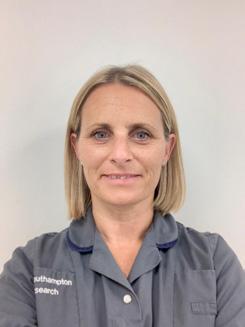
The National Neuroblastoma Nursing Group (NNNG) is affiliated with CCLG in partnership with Solving Kids Cancer (SKC). The aim of the NNNG is to support nurses by sharing knowledge and experience in caring for children diagnosed with neuroblastoma, offering a supportive network for advice and information, and working collaboratively to develop national guidelines and information for children and their families to enhance the care and experience they receive.
An animation project was created in response to the HRNBL-2 clinical trial to support parent understanding of the many different treatment randomisations. We wanted to offer a different approach to how we give information and help inform parents about this complex clinical trial.
The idea for using visual animation came from a parent at the International Society Paediatric Oncology (SIOP) congress in 2019. Zohar Shalev, a mother in Israel whose daughter had been treated for leukaemia, had illustrated the treatment protocol to help explain to children and their families how treatment is given and what it involves.
Members of the NNNG who saw Zohar’s presentation felt visual information for parents could also support treatment protocols, such as the HRNBL-2 clinical trial. An animation explaining the different treatment randomisations was suggested to support information giving and parent decision making for this clinical trial.
As a starting point, scripts were written for each treatment component within the clinical trial, giving clear, easy-toread content without jargon. Each script had information about the treatment, an overview of potential side effects and key points for parents to consider. Scripts
Helen
and
co-chairs of the National Neuroblastoma Nursing Group (NNNG), tell us more about how they have developed a range of animation videos to help parents make decisions about their child’s treatment as part of a neuroblastoma clinical trial.
were no longer than 350 words giving approximately 2-3 minutes for each animation.
The scripts were reviewed by parents as part of the Solving Kids Cancer Parent Involvement Forum and they gave valuable feedback for us to work from. Parents suggested having written captions at the bottom of the screen to help with accessibility, and short videos for each treatment component rather than one full video, acknowledging that some parents don’t want to look too far ahead.
From this meeting, one parent joined the core nursing group who worked with the animation design company to develop the videos. During production, it became clear that we needed to add more information in the introduction video to define what key terms mean such as 'clinical trial', 'randomisation', 'standard of care' and 'consent'. We also decided to develop a video for the end of treatment knowing that this can be an anxious time for parents.
Information is needed in different formats and manageable chunks to help parents absorb and understand at a time of great uncertainty. These animations will be a great aid to explain the clinical trial to support parent decision making.

The videos will be completed in September 2022 and then reviewed by parents before being submitted for ethical approval to form part of the HRNBL-2 trial. There are eight videos that will help to explain each element of the trial:
1) Introduction to high-risk neuroblastoma
2) Induction chemotherapy
3) Stem cell harvest
4) Surgery
5) Consolidation chemotherapy
6) Radiotherapy
7) Maintenance therapy
8) End of treatment
The videos will be accessible to all parents via the University of Birmingham Cancer Research Clinical Trials Unit’s website,
There are many incredibly complicated clinical steps which are made even more difficult to understand while feeling upset and distressed. Anything that makes that time a little easier for future families feels incredibly important.
while the website link will be added to the relevant parent information sheets given to parents at the time of discussing each treatment component. Information on the videos will also be available via the CCLG and SKC social media platforms.
This animation project was supported by an unrestricted educational grant from EUSA Pharma.
For more information, please contact helenpearson1@nhs.net
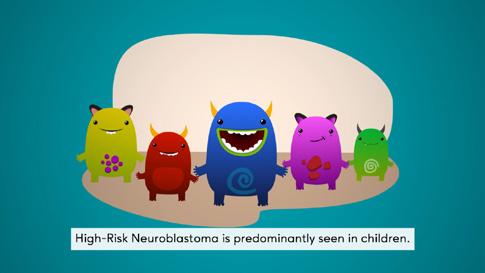
• Neuroblastoma is the second most common solid tumour in children
• Around 100 children in the UK are diagnosed per year
• Usually affects younger children under five years old
• It can happen anywhere in the body
• It usually starts in the abdomen, especially the adrenal glands on top of the kidneys or the nerve tissue around the spine and pelvis
• It is an ‘embryonal tumour’ which means it is a type of cancer that develops from cells left behind from a baby’s development in the womb
Neuroblastoma animation SHARE SAVE Neuroblastoma animation SHARE SAVE
During the COVID-19 pandemic, there were lots of high-profile news reports about clinical trials. For example, there was the ‘RECOVERY' trial which helped to show which drugs worked in treating patients in hospital, and other trials that helped to show that the COVID vaccines worked and are safe. But clinical trials
After a doctor has made a diagnosis, how do they know what is the right treatment? Whilst this is partly based on many years of medical training and experience and the shared experience of other experts, there’s also knowledge based on ‘scientific evidence’. To make sure every child is offered the best possible treatment, the evidence about which treatments work best needs to be collected in a way that is unbiased. This means that the evidence is not just influenced by personal opinion, but is scientifically accurate. This evidence is gathered by conducting clinical trials and using the results of them to make decisions on the best treatment.

A clinical trial is a type of research that measures if new treatments work in patients and whether they have side effects. When developing a new treatment, there are three things we need to know:
Is it safe?
Does it work?
Does it work better than the current best treatment?
Different types of clinical trials answer different aspects of these questions. Broadly, the types of trials are referred to as Phase I, II and III trials.
are not a new idea and did not start with the pandemic!
We’ve been undertaking clinical trials for all different types of children’s cancers for many decades and the results of these trials tell us the best way to treat them.
These are done if we’re testing a new drug that hasn’t:
been used in patients before
been used in children before
been used in combination with other drugs before The purpose of a Phase I trial is to work out if a drug is safe to use and to find the right dose. These types of trials normally only recruit a small number of patients, often no more than three patients at any one time. The patients are closely monitored to see if the drug has any unwanted side effects. Often, increasing doses of the drug are tested to work out the best dose - but what does ‘best’ mean? The best dose is a balance between the dose that will work on the tumour and the dose that doesn’t cause too many intolerable side effects. These trials often involve blood tests to measure the level of the drug in the body and sometimes special blood tests to work out how the drug is working.
These ask whether a drug (or combination of drugs) is ‘active’ against a tumour. ‘Active’ means the drug is stopping the tumour growing, shrinking the tumour or completely removing the tumours. All of these would suggest we have a drug that can work against a particular type of tumour. This is referred to as ‘tumour response’. A drug is said to be active if it can cause a tumour response against a particular type of cancer or group of cancers.
Together, Phase I and II trials are called ‘early phase trials’ and usually done in specialist units with trained research nurses. In the UK, we have 11 designated units for these types of trials. We’re part of a wider European network called the ITCC (Innovative Therapies for Children with Cancer), which has 63 hospitals in 18 countries, all specialising in early phase trials.
Drugs that are tested in early phase trials are still ‘experimental’. By this, I mean we know that the science and clinical trials in other cancers, for example in adult cancers, suggest there’s a chance they might work in a particular type of childhood cancer, but we don’t yet know for sure. Patients are usually asked if they want to join an early phase trial when all treatments that we know have a chance of working, either haven’t worked or have stopped working.

The world of clinical trials is governed by lots of laws and regulations. These laws are based on a set of principles called ‘Good Clinical Practice (GCP)’, which protect the rights, safety and wellbeing of those who take part in clinical trials, with special considerations to protect children.
All UK clinical trials testing drugs are regulated by a government organisation called the Medicines & Healthcare products Regulatory Agency (MHRA), to make sure they’re all safe, scientifically sound and run to the highest standards. Importantly, all UK trials are also reviewed by an independent research ethics committee, to ensure they’re ethical and that the information being given to parents and patients is clear and accurately describes what will happen.
The next step in clinical trials is testing whether the new treatment is better than the conventional treatments already being used. Just because a drug is new, it doesn’t always mean it will be better. A Phase III trial asks whether the new treatment can cure more patients than the current best treatment and can it do this with fewer side effects. We normally answer this question in a randomised, controlled trial.
In this type of trial, the best current treatment (arm A) is measured against a new treatment (arm B). Arm B might also be the current treatment modified to add the new treatment. This type of trial is only possible if there’s no known evidence that either arm A or arm B is better. This is known as ‘equipoise’. For each patient taking part in the trial, which arm they receive is decided at random, usually by a computer programme. At the end of a Phase III clinical trial, we will know if the new treatment (arm B) is better than the current best treatment (arm A), and if it is, arm B will become the new best treatment and should be offered to all patients with that specific type of cancer.
In the design of modern trials, we might have more than one phase in a single clinical trial. For example, a trial might start as a Phase II trial and if the result of the Phase II trial is that the treatment looks promising - i.e., it’s ‘active’ - the trial could then transition to a Phase III trial, to test the new treatment against the current best treatment. This modern approach aims to speed up the delivery of clinical trials and the development of new treatments.
Clinical trials are very important in developing new treatments and give doctors evidence to decide what’s the best standard treatment for different cancers. Patients may be offered the choice to take part in a clinical trial, either at the beginning of treatment when first diagnosed, or sometimes later, if the cancer returns. Joining a trial is always voluntary and if you choose not to, or there’s not a current trial available, that’s okay. Outside a clinical trial, you’ll always get the current best standard treatment.
When considering joining a trial, it’s really important to read all the information provided and ask as many questions as needed, to completely understand everything about the trial, what question the trial is answering and what happens. What’s more, never hesitate to keep asking questions whilst on the trial.

Behind the scenes of a trial are a number of people ensuring it runs properly and smoothly, that treatments are being followed carefully, and that patients are not getting excessive side effects, particularly when new treatments are introduced. I was the chief investigator for a liver tumour trial called the Paediatric Hepatic International Tumour Trial (PHITT), effectively making me ‘head doctor’ for the trial’s European arm.
The chief investigator has usually been very close to the science and design of the trial from the start, and in the case of PHITT we first started to put ‘jottings’ down 10 years ago. In this case, it was literally around the table with friends from Europe, the USA and Japan over coffee at one of the conferences we were attending, which are always fantastic networking opportunities.
Each clinical trial must have a sponsor - the organisation which is ultimately responsible and legally accountable for the conduct of the trial. For PHITT, this was the University of Birmingham, supported by the Cancer Research Clinical Trials Unit, which runs most of the UK-based trials for childhood cancer.
At the start of PHITT I spent a lot of time helping to turn those original jottings into a formal trial protocol which is a large, comprehensive document outlining all the procedures and requirements for treating patients. There are complex legal and regulatory hoops to go through before the trial opens too and once the trial is open and running the chief investigator, along with the management team, keeps a very close eye on things - there are lots of Zoom calls and hundreds of emails!
There are strict rules as to whom may or may not be suitable for a particular trial, termed ‘eligibility criteria’. For example, if a patient already has underlying kidney failure and the trial treatment may make kidney function worse, then that patient
wouldn’t be able to participate. As chief investigator, I was regularly contacted to arbitrate on these decisions by colleagues from around Europe.
Patients’ safety is paramount, and the chief investigator also reviews all serious toxicities. We had regular discussions with the team and doctors in the USA and Japan who were also using the PHITT protocol to ensure that we weren’t seeing anything of concern.

liver transplantation, for example. What’s important, and one of the things I regularly tell colleagues, is that despite what’s written in the trial protocol, clinicians must always act in the best interests of their patient. This sometimes means deviating from the protocol. Because I’d seen and heard about a lot of patients as chief investigator, this meant I was able to use my knowledge to support doctors from all over Europe in helping make the right decision for their patient. At least once a week I had such a query come my way. We learn so much from all these experiences and use that information to improve trials for the future.
Sometimes, clinicians just want help and advice with the best way to manage a particular patient. Liver tumour patients can be exceptionally challenging with regards to decisions around surgery and
The job of a chief investigator is very rewarding. And while the administrative burden of things like calls and emails can be overwhelming, the support team in Birmingham are fabulous and the regular dialogue with colleagues and clinicians over the world is a joy. For me personally, seeing our original ideas from 10 years ago develop into one of the biggest clinical trials ever undertaken in childhood cancer - making a difference to so many young lives - is something I’ll always treasure and be proud of.
The chief investigator, along with the management team, keeps a very close eye on things - there are lots of Zoom calls and hundreds of emails!


We published our first Research Impact Report this year to celebrate CCLG's progress towards finding a cure for children's cancer. As readers of Contact magazine, we are delighted to share extracts from this report in this 4-page supplement for Contact readers.

For 45 years, we have been at the forefront of children’s cancer. We are leaders and experts in this specialist field and have a unique position as both a research funder and professional voice.

Our research drives innovation, inspires change and delivers results for all children with cancer.
We are proud of everything we have achieved in this time, and we invite you to join us as we celebrate CCLG’s role in children’s cancer research today.
My daughter Bethany was diagnosed 14 years ago. I’d like to think if she was diagnosed today, things would look a lot different. She would be able to have her tumour DNA sequenced, have access to clinical trials, and have kinder treatment that would allow her to have a child of her own one day. This is thanks to the dedicated professionals who make sure that research happens for children with cancer. Together, we can do anything. If we work together, we can make sure that children can survive cancer for longer.

Every child with cancer deserves a future, no matter how rare their cancer is.
Childhood cancers are biologically different to adult cancers so we need to understand why and how they can be treated. Side effects of having cancer and treatment on a child’s body that is still growing and maturing can be huge and long-lasting. Having cancer as a child can affect future health with long-term effects appearing later in life as an adult.
15.5 Million projects have been helped by CCLG’s Special Named Funds
£12,500,000
21
125 £15,500,000 worth of research funded through CCLG
new research projects have been funded through CCLG from 2016-2021
73
80 grants worth £12.5 million for pioneering scientific research funded through our partnership with The Little Princess Trust
early career researchers and doctoral studentships supported by grants funded through CCLG
Understanding how and why childhood cancer begins
Unlocking the genetic code of childhood cancer
Predicting how cancer behaves in children
Discovering better drugs for childhood cancer
Upgrading treatments to give better outcomes
Designing better patient care through clinical practice
Solving challenges through innovation
Transforming care for childhood cancer survivors beyond their treatment
The Little Princess Trust works in partnership with CCLG to fund childhood cancer research, searching for kinder and more effective treatments to improve the lives of young people.
We believe that CCLG holds a unique position in the landscape of children’s cancer charities, and our grant-making activities have been superbly enhanced by its experience, infrastructure, knowledge and expertise.
CCLG is perfectly placed to act as a bridge between research and patients, and to promote research to both the scientific community and the public.
Our vision is to make sure every child diagnosed with cancer will be cured. Since 2016, we have been pushing boundaries and investing in pioneering research and scientific innovations to make this happen. We are proud of what we have achieved and are aiming high for 2022 and beyond by expanding into many different research areas. Here are some of our plans:
1
To fund more studies into key research areas
Increase amount of funding into children’s cancer
•
Fund more projects in areas with less focus including rarer cancer types
• Grow portfolio of research funded through CCLG
2
To encourage and support researchers through funding
Fund more researchers
• Grow the research community and bring together expertise from all areas

• Protect the next generation of children’s cancer research leaders
3
To build strong research networks
Continue our successful partnership with The Little Princess Trust
• Develop new charity partnerships to use our research grants management expertise to help fund high-quality research
4
To involve parents, patients and the public
Encourage greater involvement and engagement in research funded through CCLG
• Cultivate a network of parents and patients who have lived experience of childhood cancer and help guide CCLG across its research activities
Phil Brace Chief Executive Officer, The Little Princess TrustCarrie Wright’s daughter, Lucy, was diagnosed with neuroblastoma in August 2018. She writes on participating in the international MiNivAN clinical trial and offers advice to others faced with making decisions about their child’s treatment.
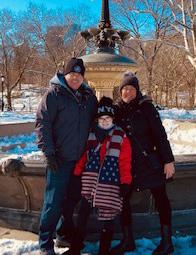
Before her diagnosis, Lucy was a happy, healthy eight-year-old girl. She loved school, and was very active, enjoying gymnastics and swimming. She’d had very few health issues and her school attendance was almost 100%. But in the summer of 2018, in the lead up to the holidays, she started to become withdrawn and quieter. She complained that she was tired, and was also losing weight and quite moody at times.

We opted into the trial mainly because of the combination of therapies being used. Though MIBG therapy was still relatively new, it had shown promise in treating neuroblastoma, while nivolumab is an established immunotherapy treatment in adults. MIBG is hard on a child as they’re isolated following treatment due to radioactivity levels, but nivolumab is an outpatient treatment and its side effects are minimal, which meant Lucy was able to live as normal a life as possible in between doses.
We’d seen presentations by Dr Juliet Gray, the trial's chief investigator, and were lucky enough to be able to speak to her before making any decisions. We also had the support of a national panel who agreed that these treatment combinations may help Lucy. We had to decide pretty quickly as treatment had stopped once Lucy’s refractory status had been confirmed. The responsibility of making such decisions is overwhelming, but we had every confidence in the panel and in Dr Gray.
NED (no evidence of disease) almost three-and-a-half years after diagnosis. She turns 13 at the end of this month and is doing incredibly well, now at high school full time and loving life!
My advice to other parents faced with difficult decisions about their child’s treatment and care is to read as much as you can, where possible. If statistics are available, then read and understand them. And ask questions, both of your oncology team and of other families. We’re all happy to share our knowledge and experience of treatment if it helps!
Dr Mark Gaze, co-investigator on the MiNivAN clinical trial, says:
We visited the GP and A&E a few times, but it wasn’t until I pushed for more tests to be done and asked for a referral that Lucy’s cancer was initially diagnosed at Royal Blackburn Hospital. This was then confirmed at Royal Manchester Children’s Hospital as stage 4 neuroblastoma (high-risk).
Having started the first stage of treatment in September 2018, Lucy’s scans indicated that she was refractory. This meant she was resistant to chemotherapy, and that the 11 rounds of chemo she’d received had little effect on her cancer. We had to find treatment that didn’t involve chemotherapy and so the MiNivAN trial was presented to us as an option.

After completing the trial Lucy still had some remaining disease, although it was much improved. She went on to do a further round of MIBG therapy
Almost everything we know about the value of different treatments comes from clinical trials. The knowledge gained about what works and, importantly, what doesn't work, has contributed to gradual stepwise improvements in results, and often a reduction in side effects. International collaboration allows trials to finish quicker, bringing advances to children sooner. So, we strongly encourage parents to consider entering their children into suitable trials when appropriate. It’s the best way we have of offering innovative treatments, and it brings closer the day when more children with cancer will be cured.
Carrie, her husband Richard and Lucy

Involving patients of all ages, and their families, in research is so important for ensuring that the best research is done to improve the lives of children with cancer. Patient and public involvement (PPI) guarantees a diversity of voices and ideas to shape what research is carried out and how research works.






































































































PSPs find out what areas of research are important to patients, families and the professionals who care for them, using a method developed by the James Lind Alliance (JLA). Patients, carers and professionals come together on an equal footing to develop a ‘Top 10’ list of unanswered research questions/topics.
Topics for research in children’s cancer are often influenced by the interests of researchers and the pharmaceutical industry. This may overlook what’s important to children and their families. The Children’s Cancer PSP, funded by CCLG and The Little Princess Trust, aims to make sure that future research focuses on what really matters and where research would make the biggest difference to children with cancer and those around them.
This might mean helping to design, interpret or share the results of a particular piece of research, but it can also be helping researchers and research funders identify what research is most important to do next.





Our steering group, led by an independent chair from the JLA, includes five parent representatives and one patient representative, alongside a wide range of professionals, and this group is involved in planning and making decisions about the project.






























So far, we’ve collected questions/ topics using online surveys – we had one survey for parents, families, professionals and adult survivors of childhood cancer and three surveys for children and young people aged four to 15. We produced animations to help explain the surveys to children.
“As a parent, I found the opportunity to be involved in the PSP a positive, tangible thing I could do following my son’s death. When Rory was diagnosed with cancer, I found myself propelled into a world in which I felt I had no knowledge, context, or control. It’s so important to me that parents feeling this way have a means by which they can realistically influence the future of childhood cancer care, to feel like they’re being listened to.”
The next step is to ask people to tell us the questions they think are most important from the questions collected. This again involves children and families. We will then hold a workshop where we will bring together people who experienced cancer as a child, family members and professionals to decide on the most important questions and produce the ‘Top 10’ priorities.
The final questions will be promoted to researchers and research funders to ensure what matters most to children, their families and professionals, are considered in research programmes going forward.

“I wanted to be involved with the PSP because of the exciting opportunity to contribute towards future research topics. I’ve found the experience to be extremely positive and that my presence is valued. I’m very grateful to be part of a group that is striving to improve the shape of future childhood cancer research.”
FOR MORE INFORMATION




 Alex Brownsdon, Patient Representative
Alex Brownsdon, Patient Representative
PROJECT TITLE: Novel biomarkers for PARP inhibitor trials for children with cancer

LEAD INVESTIGATOR: Dr Susanne Gatz (pictured right)
INSTITUTION: University of Birmingham
AMOUNT AWARDED: Approx £104,000 (funded by The Little Princess Trust in partnership with CCLG)
Testing the gene make-up of paediatric tumours is now standard in Europe for children whose disease returns. However, we often don’t know which gene changes in children’s tumours lead to the cancer’s response to specific drugs and we need to understand more about childhood cancer to do this better. Therefore, research linked to clinical trials needs to look at many more factors, such as how the tumour behaves, what molecules are present in it, and the cancer’s genetics in detail. We are trying to do this for a new group of medicines called PARP inhibitors (PARPi), which have changed the way adult cancers like breast cancer and pancreatic cancer are treated.
They work by stopping cancer cells from repairing their DNA, causing them to die. However, the DNA mutations in adults that show whether these inhibitors will work are very rare in children and doctors don’t know if the same mutations serve as markers for response in children’s cancer. Despite the unknowns, many researchers believe that PARPis could provide an effective treatment for children with cancer.
The European ESMART trial contains many different treatment arms, and the idea is to match the gene changes in the tumour to the right novel drug treatment. Two arms of this trial investigate PARPis. Using tumour and blood samples taken as part of the ESMART trial, my team, involving scientists and clinicians from the University of Birmingham, Institut Gustave Roussy in Paris, and the Universities of Manchester and Newcastle, hopes to better understand which children can benefit from these inhibitors. Early data from the trial shows that three out of five children who benefitted from PARPi had changes in a gene called ATM. We also suspect that another factor, the SLFN11 protein, plays a role in the response to the treatment, as well as the composition of a molecule called mRNA, which is made from genes. These trial arms will include more than 100 patients and we will look at tumour tissue and blood samples (in the case of neuroblastoma) and correlate findings with their clinical data and known gene changes from when they joined the trial. We’ll be looking at whether the patient’s cancer responds to the inhibitors, and analyse ATM, SLFN11 and mRNA expression
in the tumour samples. This will help us to see if we can identify specific patterns in the data which are linked with response to treatment. With the blood samples, we’ll be looking to see if we can detect gene damage in tumour cells circulating in the blood of treated children, as this could be an early indicator of the PARPi working.
This research is important because it’s addressing a key issue in treating childhood cancer: how to know what medicines will work for a patient, and how to know that they’re working. Knowing this means that doctors can get a child’s treatment right first time and reduce unnecessary side effects if the treatment isn’t working. The project is the first of its kind for PARPi, and we believe that it may lead to changes in medical practice which ultimately will help improve outcomes for children with cancer.
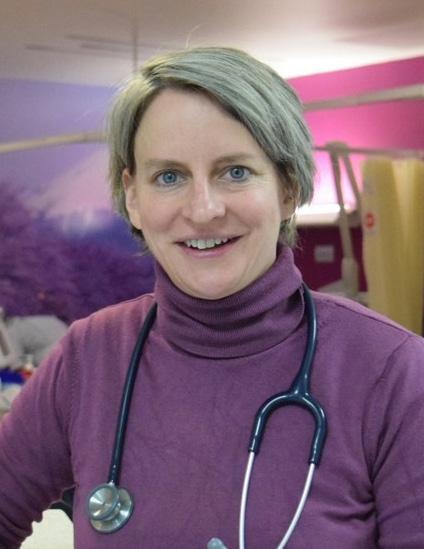
Q: Tell us about your career so far?
A: I am Senior Lecturer in Paediatric Oncology at the University of Manchester and Honorary Consultant Paediatric Oncologist at Royal Manchester Children’s Hospital. I’m also the national lead for the ECMC Paediatric Network. I trained in paediatrics in Bristol and Sheffield, and came to Manchester to do a PhD in 1997 and am still here 25 years later!

Q: Have you always wanted to work in paediatric oncology?
A: Working with children is both the most demanding and the most interesting type of medicine, so paediatrics was always what I wanted to specialise in. Oncology was the part of paediatrics that I found most interesting. I liked the focus on running trials to provide evidence for the best treatment, and being part of a team of so many different professionals all working towards a common goal.
Q: Tell us about the Paediatric Network ECMC?
A: We established the network in 2012, linking all the centres in the UK that were able to run early phase trials of new drugs for childhood cancer. The network can identify where the best trials are for any individual patients, and makes it easy for families to be referred to other centres. The ECMC-funded research nurses are brilliant at collecting and processing patient samples, recruiting families to studies, and supporting them while they’re on trial. Previously the network has been funded by Cancer Research UK and National Institute for Health and Care Research, and from next year The Little Princess Trust will also become a funder.
Q: What’s the most rewarding thing about your job?
A: Working together as a team to get everything done as quickly as possible to make a diagnosis and deliver a treatment plan for a new patient can be very satisfying. It can be a relief for families to know what they are dealing with, and to start treatment.
Q: What is the proudest moment of your career so far?
A: The main aim of the Paediatric Network ECMC was to improve access to experimental cancer medicines for
children. I am very pleased that it has been able to make sure that families get offered the same opportunities to take part in trials whether they live in Inverness or London. It was amazing that even during the COVID pandemic we were still able to keep most trials open so that families could still access new drugs.
Q: What are the challenges involved in clinical trials?
A: Opening trials for children can sometimes still take too long and be too complicated, and we need to be better at helping families actually enter trials, even though we have ensured families are offered the same opportunities regardless of where they live.
Q: What area of your current work excites you the most?
A: It is very exciting to see modern platform trials with multiple targeted agents, offering trial options for patients even when they have very rare genetic changes in their tumours. We’re getting ever-increasing amounts of information about the biology of children's cancer at relapse and we need to take the opportunity to create a system that will allow us to use these different types of information to make the right decisions for each child's treatment.
Q: Any final words for this CCAM edition of Contact?
A: Children's cancer can be easily lost in the vastness of adult cancer. We will keep fighting to be seen and heard, to make sure that children's cancer isn't ignored and is seen as a priority for funding. Better treatments come from more research and more research needs more money.
"The network can identify where the best trials are for any individual patients."Jane Cooper, Rebekah Lewis and Rosie Williams
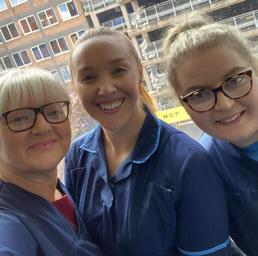
Research nurses support and coordinate the delivery of clinical trials, which involves taking samples, administering investigational medicines and obtaining consent for studies. They have specific training to be able to take consent and have an in-depth knowledge of a range of research studies and clinical trials available. A non-research nurse will not be able to obtain consent for studies, but they may support the research trials by taking samples and administering medicines. Research nurses work within a wider children’s cancer research network across the UK with investigators involved within each study.
Q: Does every Principal Treatment Centre (PTC) have a research nurse?
A: Each PTC will have a research nurse to support the delivery of clinical trials. Some centres only have one or two nurses and others may have a larger team of nurses, supported by a team of data managers and clinical trial coordinators. The shared care centres don’t have their own research nurses, though the PTC they are attached to will support any research trials for that area.
Q: Do you administer the treatment?
A: Different childhood cancer treatment centres may work differently to others. Here at BCH, the research nurses will often administer the treatment, though nurses on the ward and in day-care settings are also qualified to do so, so don’t worry
if it’s not a research nurse on every occasion. If it’s a novel drug that nonresearch nurses are unfamiliar with, the research team will always be there to support administration.
Q: How is the information from my child's participation collected, stored, sent to and used by the researchers?
A: Any information collected for a study will be confidential, meaning patient identifiable information will be removed. The data managers who support the research nurses will collect data from the patient’s medical records and securely upload it on to an encrypted confidential database where the researcher can access the information without having direct access to your child’s notes. Any samples that are required by the trial will be handled appropriately and sent to the trial’s main lab for analysis.
Q: How does my child taking part in a trial make a difference for future treatments?
A: Taking part in a trial can have a really positive impact for future treatment as this is how researchers and clinicians develop new medicines and improve current treatments, reduce toxicities and late effects. The ultimate aim is to improve prognosis and quality of life for each of our cancer patients.
Do you have a question to ask one of our experts?
Please get in touch by emailing info@cclg.org.uk or via DM on our social channels. We may feature your question on a future ‘Ask the Expert’ page to help other families and patients who have the same question. Parents and carers who would like to join our private Facebook group, scan the code to visit.



